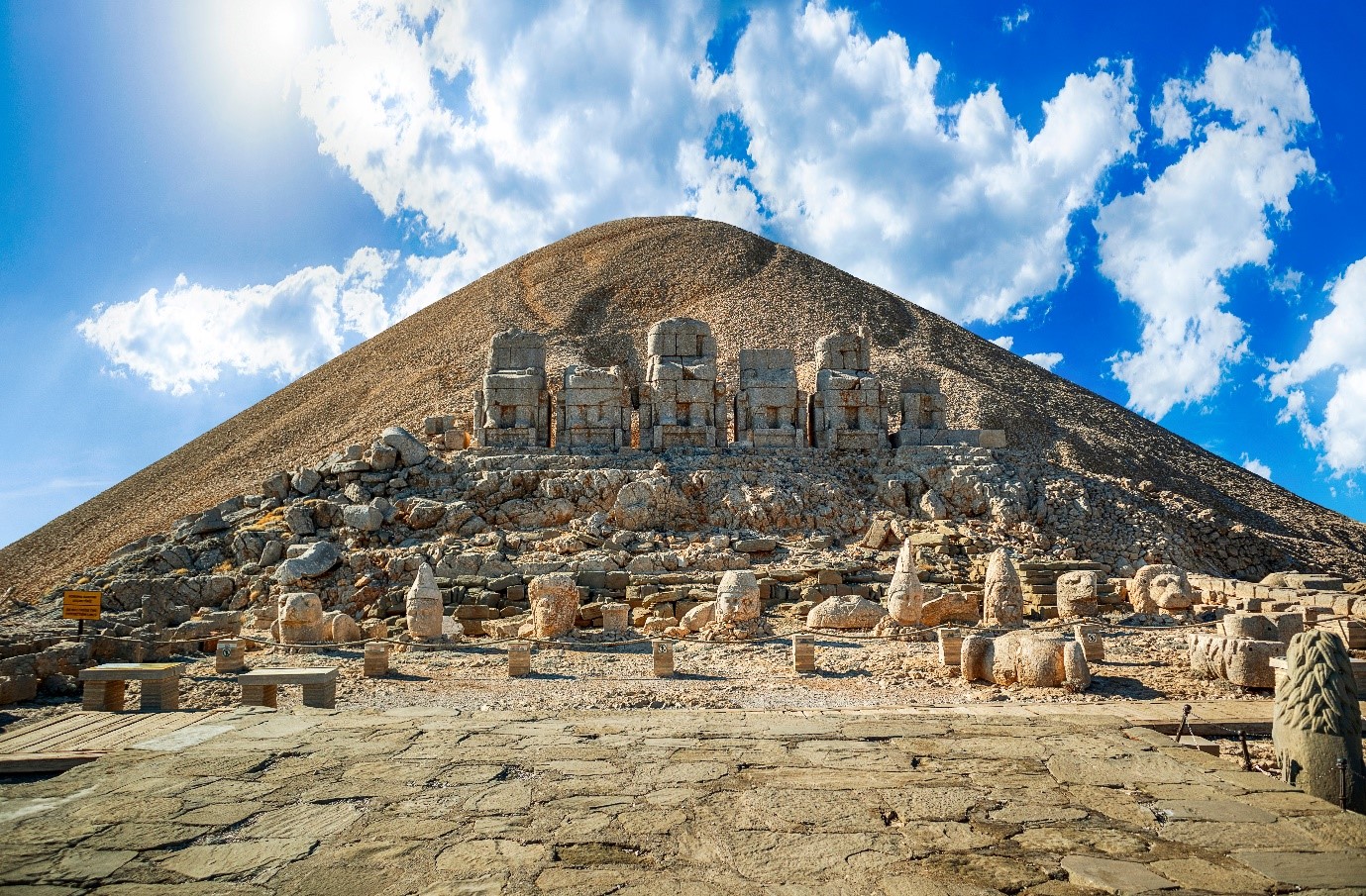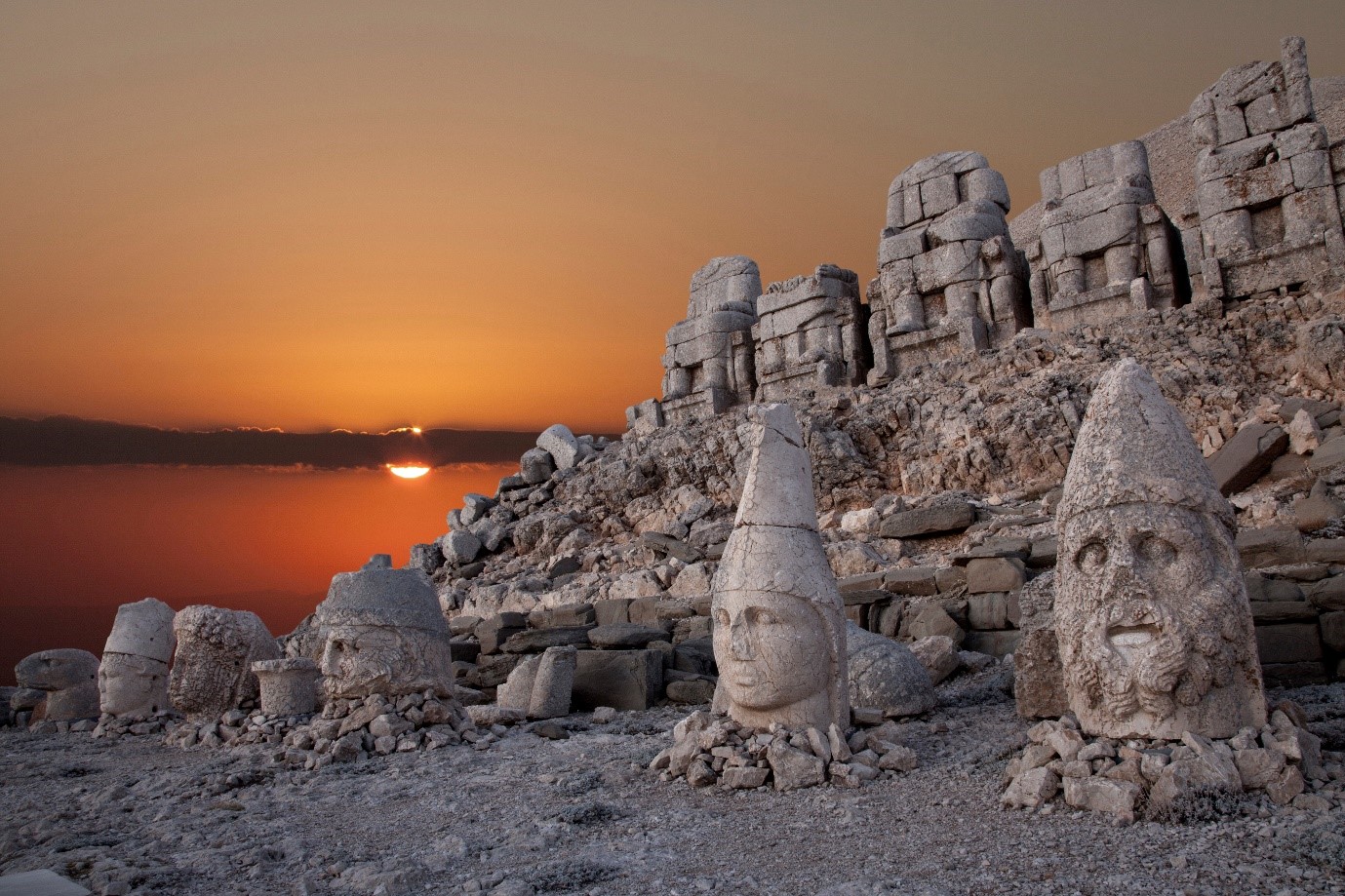
Mount Nemrut is the home of an ancient complex built by the fourth, and arguably the most famous, king of Commagene, Antiochus I Theos (the ‘God King’). Located in the eastern Taurus Mountain range in southern Turkey, near the town of Adiyaman, Mount Nemrut extends to a height of 2,134 meters (7000 feet). At its summit, monumental statues remain as guardians to its royal tomb.
The Kingdom of Commagene, was a small, independent Armenian kingdom that was formed in 162 BC. This was a period during which the once mighty Seleucid Empire was beginning to disintegrate, allowing certain areas of its empire to break free from the centralized control of the Seleucids.
King Antiochus I, ruler of Commagene from 70 BC to 36BC, was a most unusual king. He claimed descent from Greek conqueror Alexander the Great on his mother’s side, and from the Persian King Darius the Great on his father’s side, thus combining the west and the east. But what was particularly salient about this king was his unerring pride and his over-extended ego. Antiochus I claimed he had a special relationship with the gods and instituted a royal cult in the Greek form of the religion Zoroastrianism with the clear intention of being worshipped as a god after his death.
In 62 BC, Antiochus commissioned the construction of a magnificent religious sanctuary on Mount Nemrut (Nemrud Dagi), where people could come and pray to him, and celebrate his life and leadership with annual festivities.

Ancient statues on top of Mount Nemrut. Source: Todor / Adobe Stock
Antiochus’ sanctuary was forgotten for centuries, until it was re-discovered by a German archaeologist in 1883. In 1987, Mount Nemrut was declared a UNESCO World Heritage site, so that it could be protected and preserved for the years to come, something that Antiochus would be very pleased about!
Top image: Some of the heads of the colossal statues at Mount Nemrut. Source: izzetugutmen / Adobe Stock






